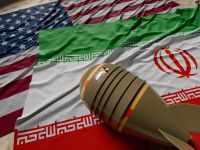When, in the summer of 1984, economically viable quantities of oil were discovered in the Ma'rib region of Yemen, it was believed by many in this country that they were about to lose their status as the economic backwater of the Arabian Peninsula.
But their optimism was short-lived. For one thing, the oil industry struggled to get off the ground because of the country’s precarious internal security situation, and the oil industry’s fledgling infrastructure became a favored target for opponents of the government. As the London-based weekly, Al-Majallah explained in a June 2000 report: “ Those deprived of this oil were the ones taking revenge upon it—for some reason or for no reason. If one of the tribes was upset with the government, it blew up the oil pipeline as if it were the reason for the trouble in Yemen.”
Oil was unable to provide answers a host of other calamities. The collapse of the Soviet Union left Yemen without the support of its traditional patron. Then, the return of hundreds of thousands of workers from the affluent Gulf states, during the buildup to the 1991 Gulf War, deprived Yemen of a regular supply of foreign currency, derived from the money sent by expatriate workers to their families back home. Add to that a two-year drought, a civil war in 1994, and a dispute with Eritrea over Janish Island in the Red Sea, and one will understand that events had a habit of tripping up Yemen’s economic recovery and holding foreign investors at bay.
According to the World Bank, Yemen remains one of the world’s poorest nations, with a shortage of water, a growing population, and inadequate education and health care systems. Interestingly, the World Bank believes that, ultimately, the future of Yemen will be not determined by the extent of its oil deposits, but rather by the availability of water supply.
For the most part, the international community has ignored Yemen. According to the World Bank, after Nepal, Yemen is the country receiving the least aid in the world. Still, the International Development Agency is attempting to lend a helping hand—providing loans to private sector enterprises, improving and developing the management of financial resources, lessening the economic gap between males and females, and strengthening state institutions.
Yemen’s government has been trying hard to encourage investment in the local oil industry, and trying to dispel international public opinion that Yemen is a dangerous place for foreign investors. Its campaign has met with minor success, but to date has yet to attract even one major oil conglomerate into the country.
The government has also been cracking down on kidnapping and terrorism. A law was approved in July 1999 that mandated the death penalty for kidnappers. This did not prevent the abduction earlier this year of Kenneth White, a 54-year old employee of the American Halliburton Company. He was released in February, but his kidnappers were never arrested, nor has the new law ever been implemented.
Reportedly, from the perspective of the foreign oil companies, the risk of doing business in Yemen is not just security related. For one, there appears to be a decreased rate of success for finding oil. According to the Yemeni ministry of petroleum and mineral resources, 12 out of the original 19 oil exploration areas have been abandoned.
And then there’s the question of corruption. Many experts, including the country’s president, Ali Abdallah Salih, believe that institutionalized graft is one of the most prominent obstacles to economic growth and foreign investment in Yemen.
One positive move that was made was the passing of a new law to encouraging foreign investment. It reduces significantly the amount paid in taxes by companies when they sign contracts. Royalties now levied by the Yemeni government are arranged in a graduated fashion that ranges from 3 percent to 13 percent, instead of the previously fixed rate of 10 percent.
While not hooking any big fish, the new investment law has evidently attracted to Yemen more than 35 smaller oil companies, who are prepared to ignore the physical risk of doing business in the country and enjoy Yemen's low production costs, which equal $1.70 per barrel compared with $4.00 per barrel in Sudan and $8.00 per barrel in the North Sea.
Commentators say that if Yemen want to attract the larger oil companies into its midst, its government will have to effect real structural changes, including the privatization of state-controlled companies, the reform of the banking system and the abolition of monopolies.
The recent resolution of a long-time border dispute with Saudi Arabia is considered an important development. Not only will Yemen now be able to redirect fiscal and human resources that were needed by the army, to industrial and agricultural projects, but there also will be an increase in commercial contacts with its northern neighbor. In time the Yemeni economy may even enjoy significant Saudi investment and assistance.
Improved relations with Saudi Arabia may have other benefits. It is expected that Yemen will one day be paid oil pipeline royalties by Saudi Arabia for the transportation of oil from the Saudi-Yemeni border, across the country to the Arabian Sea. Yemen is strategically located insofar that it is not limited by a single waterway. This provides it with proximity to both the Asian and African markets.
Yemeni oil production currently stands at 400,000 barrels per day, up from 169,000 barrels per day in 1995. Some 73,000 barrels per day are consumed locally.
However, output is expected to increase. As a result of a $250 million investment in the Shabwah and Junah oil fields, the Yemeni government is predicted to boost production to 500,000 barrels per day by the end of the current year.
Oil reserves equal 4 billion barrels, and natural gas reserves are estimated at 16.9 billion cubic feet.
Oil production has historically been from Area 18 in Ma'rib, Area 10 in Masilah, Area 5 in Junah, and Area 4 in Shabwah. There are several oil pipelines, with a total length of 1,065 kilometers. The most important of these are
the two that link the production areas in Ma'rib and Shabwah to the ports of Ra's Aisa on the Red Sea and Hisn al-Nushaymah on the Arabian Sea.
Five small international companies are currently producing oil in Yemen and several Italian, Algerian, UAE and Australian firms are drilling for oil. Additionally an international consortium is attempting to develop a $5 billion-dollar natural gas project that will involve exporting liquefied natural gas to India. That project was to have started by the end of the year, but, because the Asian financial crisis two years ago, its launch was put off until 2003. Additionally, Yemen has signed a memorandum of understanding with British Gas, which eventually could lead to a 25-year agreement, also involving the export of gas to India.
At 120,000 barrels per day, Yemen’s refining capacity remains small. One of two old refineries is located in Aden and it is running only at half-speed because of damage it sustained during the 1994 civil war. A new refinery is planned at Ras Aisa, and when complete it will double the country’s refining capacity.
Still, the Yemeni government would like to reduce its dependence on oil income by diversifying the country’s sources of revenue. To this end, it is looking to its fishing industry, qat and coffee exports, tourism and the construction of an improved port in Aden. Nonetheless, for the foreseeable future, oil is likely to remain the mainstay of the Yemeni economy. – (Albawaba-MEBG)
© 2000 Mena Report (www.menareport.com)







